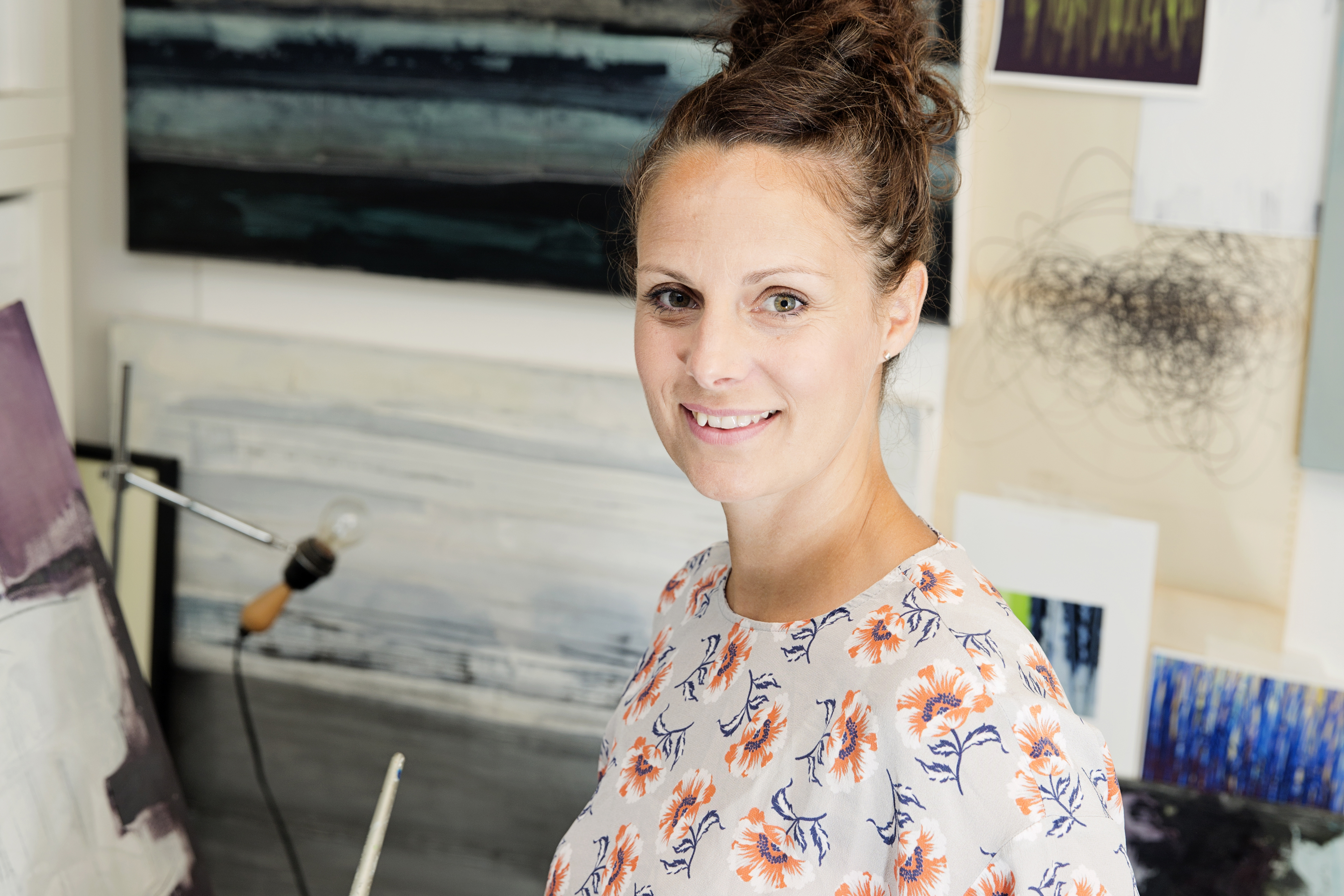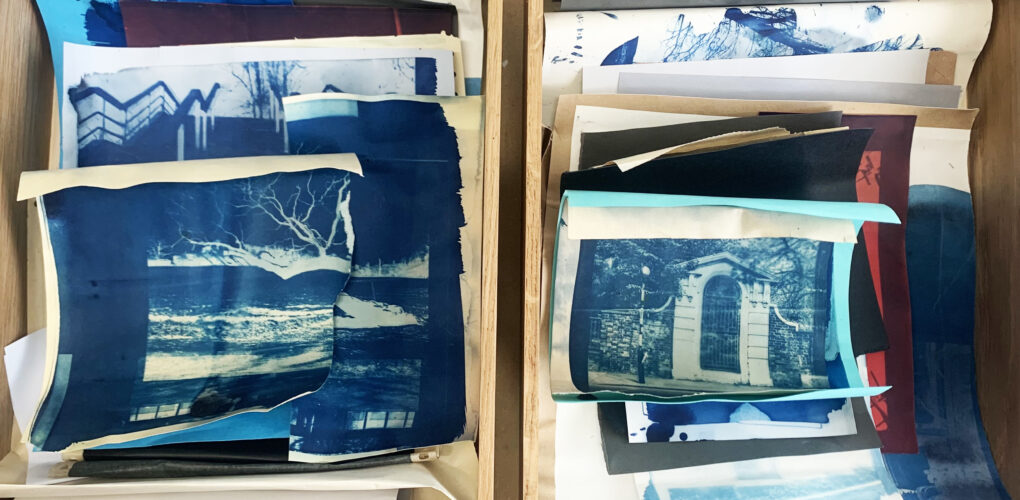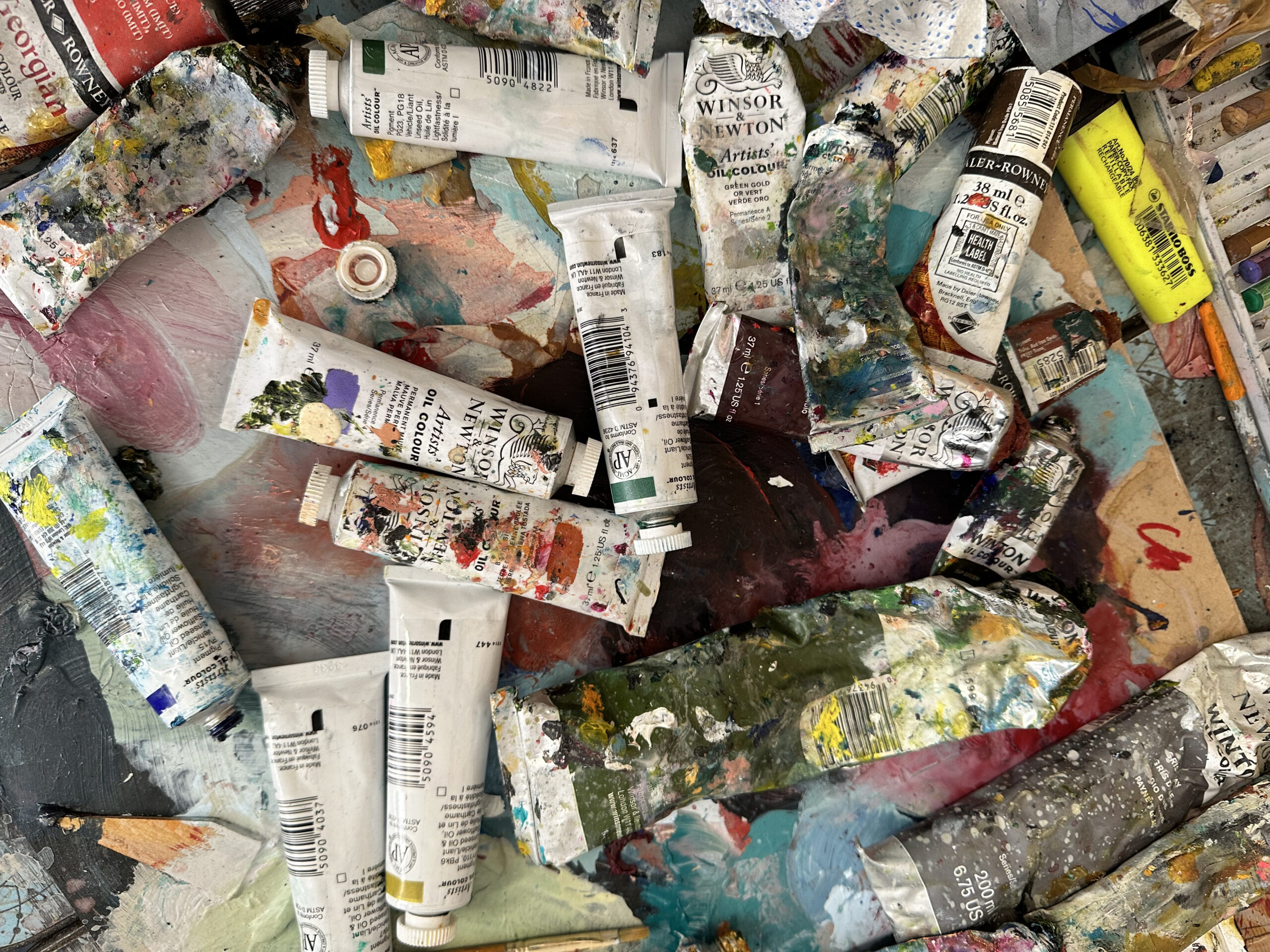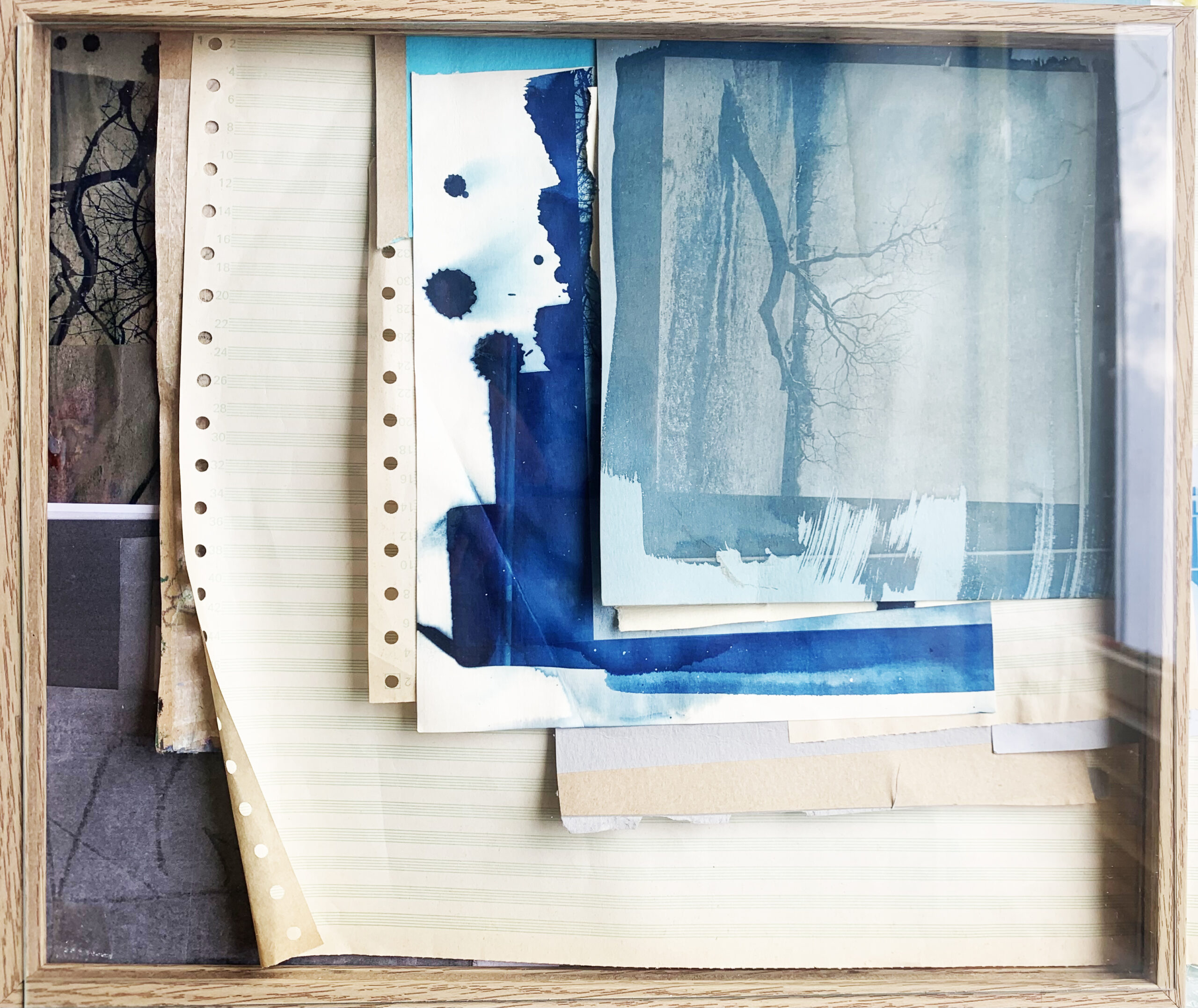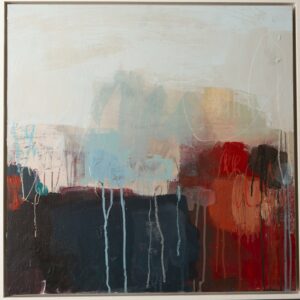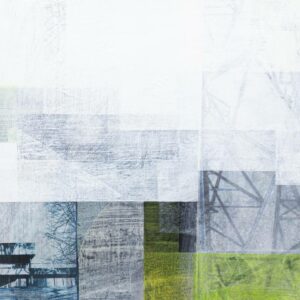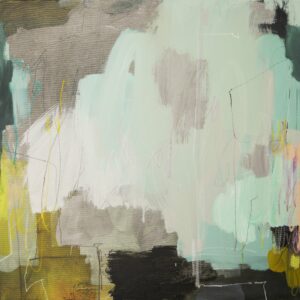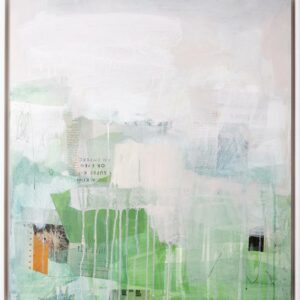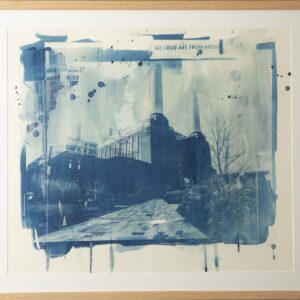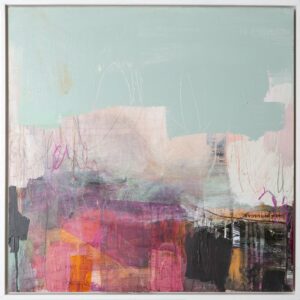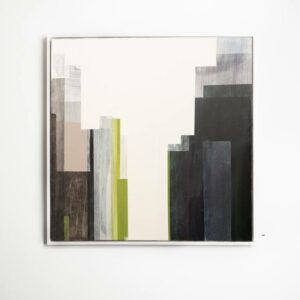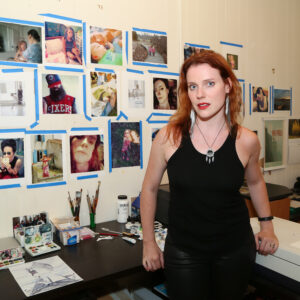One to Watch
 Up For Interpretation: Michelle Wickland’s Intuitive Compositions
Up For Interpretation: Michelle Wickland’s Intuitive Compositions
Abstract artist Michelle Wickland always knew she would lead a creative life, from picking up to moving to London to pursue formal artistic training to decades in the film industry. Michelle graduated from Central Saint Martins College of Art and Design with a degree in textile design and a specialization in printmaking. She now uses her experience with photography and cyanotypes to create improvisational compositions which allow the viewer to connect with their emotions and memories. Since 2018, Michelle has participated in multiple exhibitions across the greater London area.
Tell us about who you are and what you do. What’s your background?
I’m originally from Derby but moved to London to study at an art college over 30 years ago and I’ve never left. Growing up within a non-artistic northern family setting made me even more eager to branch out into the big wide world and find my dream. Some people would describe it as escaping. When asked when I was young what I wanted to be I would always say, “I don’t know, but it isn’t going to be boring, and it won’t be normal.”
Soon after leaving college, I began my journey into the wonderful world of costume, working on TV, film, and theatre projects. I felt a real belonging within the industry and remained there for over 20 years. Eventually, I gave in to the overwhelming urge to return to my first passion: Art. To explore my own creativity and style in my own unique way.
What does your work aim to say? What are the major themes you pursue in your work? Can you share an example of a work that demonstrates this?
I am a contemporary abstract artist inspired by colors and shapes within nature and the world around me. My fascination with finding contrasts within my environment and how they can evoke emotions when least expected leads to bold and vibrant abstract pieces. There isn’t really a pressing point to my work which is entirely the point. So many artists tell a great story or have strong opinions depicted in their work. I’m not that artist. I’m an artist that lets the feeling of the process take over. I am an artist that sees and notices day-to-day things that inspire me to just start a project. I see my work as an arrangement of shapes and color.
I feel strongly that art doesn’t need to be meaningful to be good. Yes, meaningful art has its place and is extremely important in the world, but so is art that can make you feel calm, content, and happy just for being. My art is a journey from one point to another, from A to Z with lots of stages between. It’s a personal mindset, a window into what I’m thinking whilst painting and where each mark is taking me next. Bob Dylan wrote, “The best art is meaningless.” I love this.
Can you walk us through your process for creating a work from beginning to end?
My collections are most often inspired by and start with a series of my own photographs which capture beauty and simplicity in the world. Quite often, these show harsh, angular industrial landscapes juxtaposed with the uncertainty of the ever-changing nature around them. It could be the empty space around a rooftop or a shadow on a wall. Then I distill my compositions down to their raw, abstract, and engaging interpretation through mixed media, collage, sketching, and painting. I move on from my initial sketches and collages to a more abstract concept. My thought process becomes a stream of conscious, decisions flowing from one to another, pushing each idea and concept into the next. Without mark one I wouldn’t get to mark ten.
Recently I have been photographing London buildings. I then create cyanotypes of these and paint or draw on top of them. I have collaged them and layered them to create new beginnings for a new set of paintings. Collating all my new ideas I will start painting, creating a more abstract set of oil and mixed media pieces. However, my vision will always change with the process so I can’t ever predict what I will end up with.
Who are your biggest influences and why?
My art teacher at school said to me, “Michelle, can you imagine doing art every day?” I said, “No, how is that possible?” She said, “Go to college and study art and you will find a job that enables you to create and do something artistic every day.” I think she knew that this was not the world I came from or that this was not even a concept I would have believed possible. From that moment I knew what I was going to do. This one teacher has been the biggest influence on my artistic career.
My first artistic influence was Andy Goldsworthy for his innovative sculptures within nature. I think he inspired me to open my eyes to my surroundings and the environment. My other inspirations are Anish Kapoor for his moody colors, Maria Bartuszova for her years of pushing on with her ideas, and Andreas Gursky for his ability to see something beautiful in everyday life and being able to capture it.
How do you hope viewers respond to your works? What do you want them to feel?
I much prefer to listen to them telling me what they think rather than me telling them what I have painted. I suggest that it can be whatever they see. I get more excited when the viewer sees something in the painting, how it might bring back memories and feelings, and what it has evoked in their own creative imagination. I’m happy not to tell the viewer how it started if they don’t ask.
Do you prefer to work with music or in silence?
I must listen to music. Since having a child, I have always been on a timer, I always have somewhere else to be and always have so much to do, so it’s nice to switch off and block everything else out. I have found that once I have started a project listening to a particular album or playlist, I must listen to the same songs over and over. If I change my music it puts me in a totally different headspace and my artwork changes course when I don’t want it to. That’s a lot of months of listening to the same thing. A new set of songs comes with a new set of paintings.
If you couldn’t be an artist, what would you do?
If I couldn’t be an artist, I’d go back to the film industry. I could say I’ve been lucky enough to achieve two things I love. But if art or film wasn’t an option, I’d work with children somehow. I do look back at my choices and think if I didn’t have the option of going to art college, I should have joined the army.
Love reading about all things art? You can have articles from Canvas, curated collections, and stories about emerging artists delivered straight to your inbox. Sign up for the Saatchi Art Newsletter.
